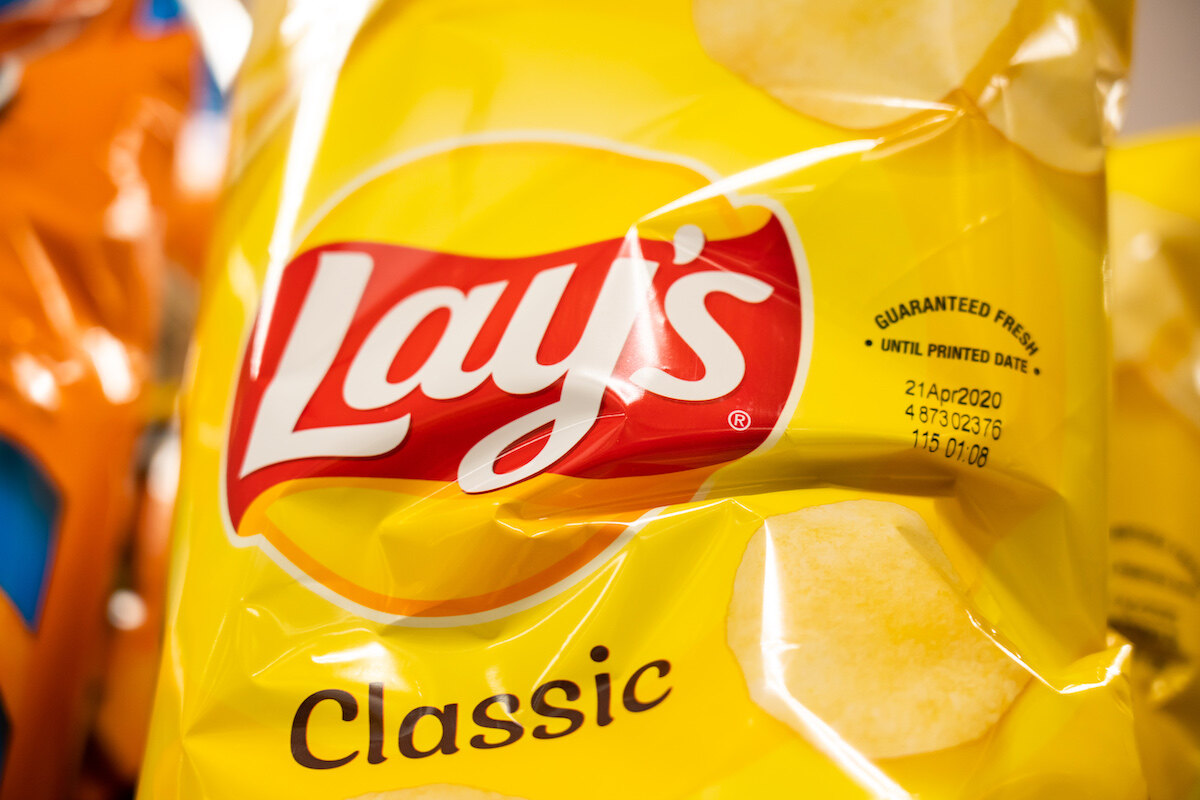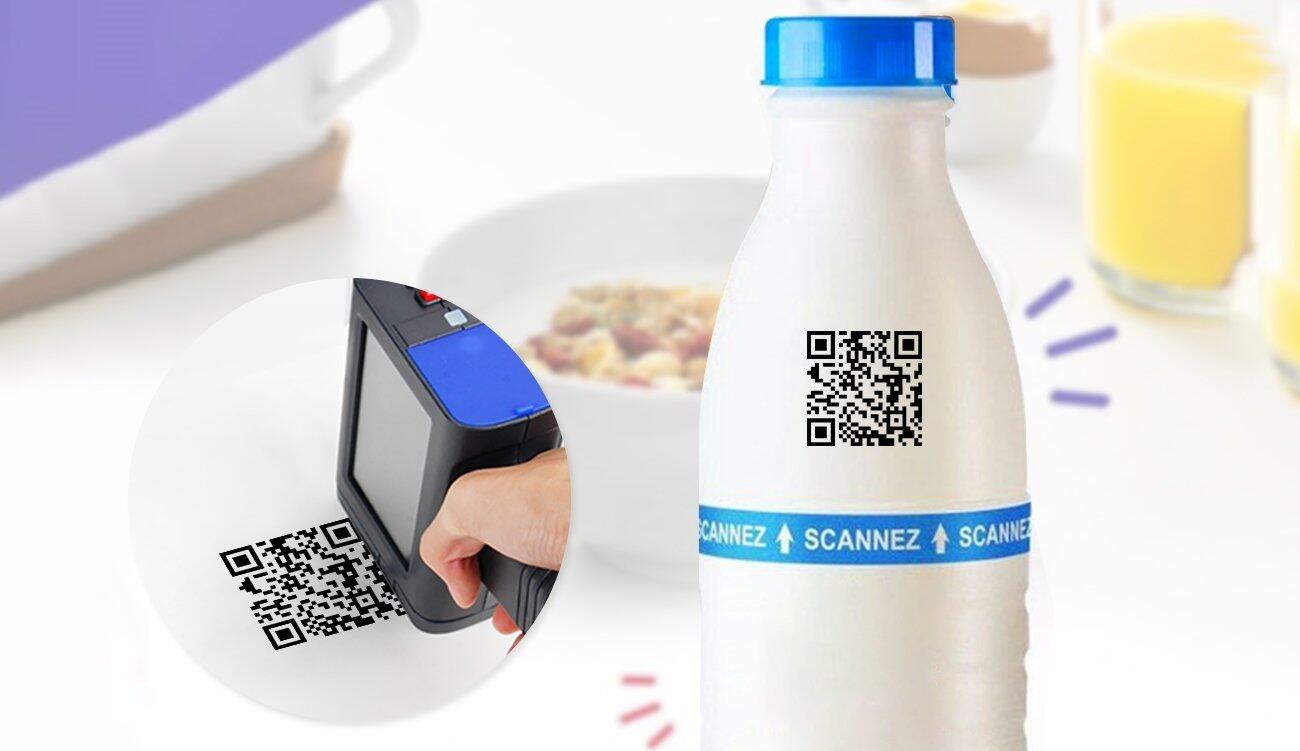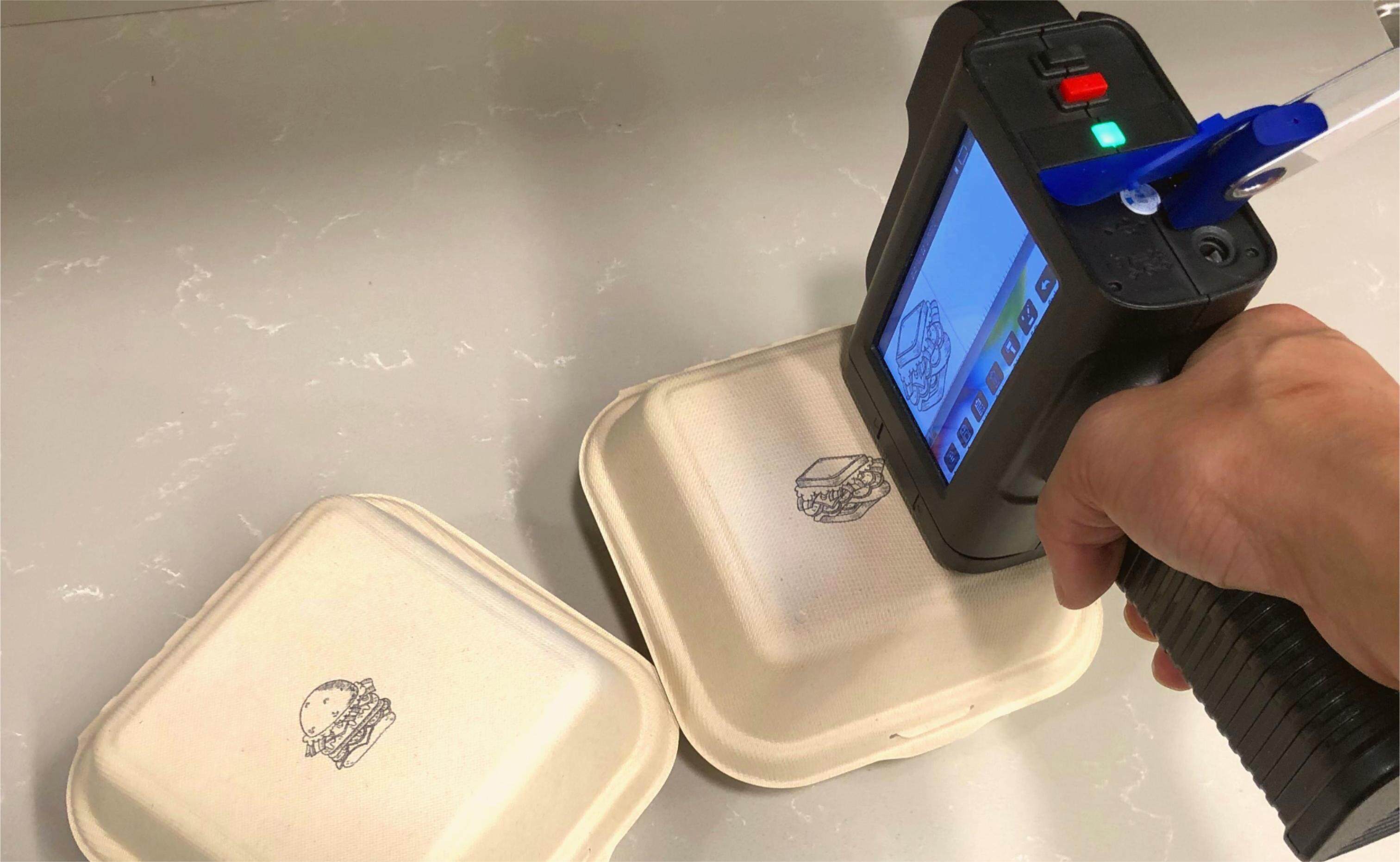The Role of Handheld Inkjet Printers in the Food and Beverage Industry
In the food and beverage industry, precision, compliance, and efficiency are critical. Handheld inkjet printers play an important role by enabling businesses to print variable information directly on packaging or products with flexibility and accuracy. From expiration dates to branding, these devices provide a cost-effective and versatile coding solution.
Application Cases in the Industry
Handheld inkjet printers offer versatile applications across the food and beverage sector. We will share some of the commonly seen applications below.
Expiration and Production Dates
Clear and reliable printing of expiration and production dates is essential to meet safety standards and reassure consumers. Handheld printer guns allow operators to mark cartons, bottles, cans, and plastic wraps with precise date codes, even on curved or irregular surfaces.

Traceability Codes
Handheld inkjet printers are a good solution for food and beverage coding, especially when it comes to traceability. They enable quick and accurate printing of batch codes, QR codes, and barcodes, ensuring that each product can be tracked through the supply chain.

Branding and Customization
Beyond compliance, handheld printing machines also support branding needs. Businesses can print logos, promotional text, or seasonal messages directly on packaging, helping to differentiate products and engage customers.

How to Choose the Right Handheld Inkjet Printer
Ink Type and Food Safety
When using portable handheld inkjet printers in the food and beverage industry, ink choice is critical. Generally, inks are divided into two main categories:
- Water-based inks: Ideal for absorbent materials such as paper bags, cardboard boxes, and kraft packaging. They soak into the surface quickly and provide clear, smudge-free codes.
- Solvent-based inks: Designed for non-absorbent surfaces like plastic bags, cans, glass bottles, and metal lids. These inks dry fast, adhere firmly, and resist smearing even in humid or cold storage conditions.
Selecting the correct ink ensures not only print clarity and durability, but also compliance with food safety standards, since specialized formulations are often required to meet packaging regulations.
Print Quality and Resolution
High-resolution printing is essential to ensure that expiration dates, batch numbers, and traceability codes remain sharp and easy to read. Clear codes not only meet industry compliance standards but also improve scanning accuracy across logistics, retail, and quality control processes.
Durability and Maintenance
In food production settings, handheld printers must handle frequent use, temperature fluctuations, and possible exposure to dust or moisture. A durable design combined with easy-to-clean surfaces and replaceable parts helps extend printer lifespan while minimizing unexpected downtime.
Connectivity and Integration
Look for devices that support WiFi, Bluetooth, or USB to integrate with databases and production line for automated coding workflows. This connectivity ensures faster updates, reduces manual errors, and streamlines coding workflows across the production line.
Cost-Effectiveness
Choosing the right printer means weighing upfront cost against long-term efficiency. Models with low-maintenance designs, efficient ink consumption, and minimal downtime deliver greater value over time, helping businesses cut operational costs while maintaining consistent print quality.
What Bentsai Recommends?
Bentsai offers several handheld inkjet printers tailored for the food and beverage industry:
- Bentsai BT-HH6105F: Compact and versatile, ideal for printing small-sized batch number, dates at up to 12.7mm on cartons, plastics, and labels with up to 600 dpi high resolution and excellent durability. With variable database and the capability to be used on production line for streamlined auto-coding and efficient labeling.
- Bentsai B35: Designed for slightly large-character coding, the B35 handheld printer prints up to 1 inch tall with only 460g light weight for easy printing on-the-go. Battery lasts up to 8 hours, suitable for factories with large production volumes.
- Bentsai B10 Mini: Weighs only 195g without installing an ink cartridge, this mini printer print up to 12.7mm with quick drying ink. Can fit into a pocket and is a portable option for small businesses or mobile food vendors, balancing portability with professional print quality.
In Conclusion
Handheld inkjet printers have become indispensable in the food and beverage industry, offering flexible, reliable, and cost-effective printing solutions. From ensuring compliance with traceability requirements to enhancing brand visibility, the right printer helps businesses achieve both operational efficiency and consumer trust.
Ask Question
No questions and answers

